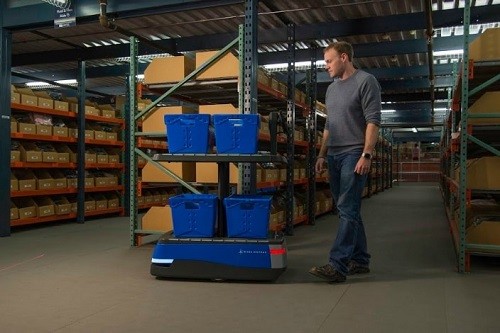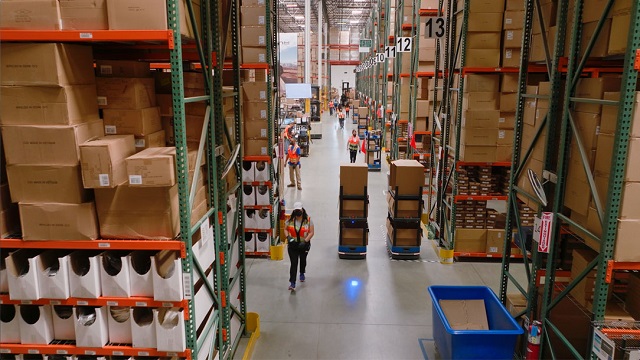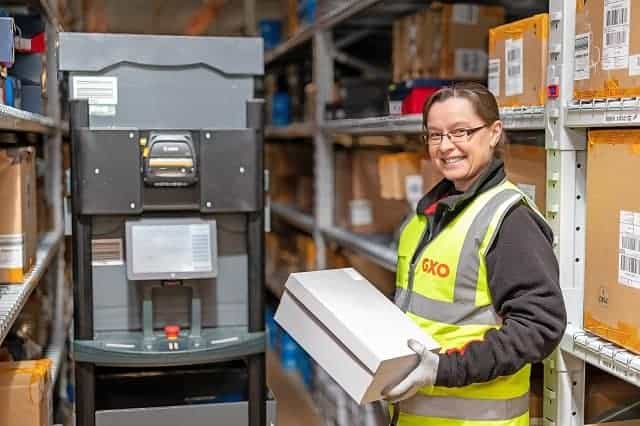Order picking is central to any thriving e-commerce and retail businesses and is the backbone of successful order fulfillment operations. Accounting for over 50% of fulfillment center operations and 55% of warehouse operating costs, order picking is arguably the most important activity in fulfillment centers, so an effective order picking system is crucial. There are several types of order picking systems warehouses use to boost productivity and accuracy.
Since warehouses that rapidly and accurately execute order picking operations are usually the most successful, companies should carefully select their order picking systems. Let’s take a look at the different types of warehouse order picking systems and types of picking methods in use today.

Single order picking
In single order picking, pickers move through the warehouse and retrieve SKUs one by one to fulfill one order at a time. This picking system works well for small warehouses that handle simple orders with just a few items.
Batch picking
Batch picking optimizes picking activities by retrieving SKUs in bulk to fulfill multiple orders at a time. This minimizes travel time and speeds up fulfillment operations, especially for warehouses that receive multiple orders containing the same SKUs. Workers use a consolidated pick list to pick SKUs for multiple orders in one pass.
Multi-batch order picking
The multi-batch order picking system reduces picking times by simultaneously picking items for multiple orders. Workers typically use multi-tiered picking carts to pick multiple SKUs for several orders at a time. This picking system is used for orders coming from different areas in the warehouse and minimizes overall travel time since workers go through the facility once to fulfill multiple orders.
Cluster picking
This picking in a warehouse methodology is used to fulfill multiple orders at the same time. Workers travel through the warehouse retrieving SKUs on multiple pick lists and placing them into separate bins/containers. Each container is associated with a separate order/pick list. This eliminates repeated trips to the same pick location and removes the need for sorting since this is done by pickers at each pick location. However, it requires the use of sophisticated WMS solutions for proper scheduling and assignment of clusters.
Wave picking
Wave picking is a variation of batch and zone picking that is particularly useful for large warehouses that regularly receive multiple high-volume orders. Orders are grouped into sets or waves according to factors like customer location, order frequency, order type, picking zones, delivery date, etc. Workers simultaneously pick SKUs from multiple zones and forward them for sorting and consolidation into individual shipments. Waves are assigned to pickers and schedules to maximize efficiency.
Zone picking
With zone picking, the warehouse is divided into zones and dedicated workers are assigned to each zone. Workers fulfill orders by going through the pick list and retrieving SKUs stored in their zone. Once all the items in that zone have been picked, the order carton is passed to other zones. In this way, SKUs are picked and passed from zone to zone and packed for shipping in a central consolidation location. This picking system significantly reduces travel time through fulfillment centers since workers stay within their assigned zones when picking items. For more information, read about the differences between zone and wave picking.
Types of automated warehouse order picking systems

Automated warehouse order picking systems work best for modern warehouses with the right technology. Let’s explore some commonly used automated picking systems.
Pick-to-light
This automated picking system requires the installation of pick-to-light LEDs and barcode scanners on racks and shelves throughout the warehouse. Once a picker scans a barcode attached to a shipping carton (that holds the contents for a single order), the LEDs for SKUs listed in the order begin to glow. Workers follow these lights to retrieve SKUs on their pick list.
Voice picking
With voice picking, pickers receive verbal instructions on what items to pick and the items’ locations in real-time. These instructions are sent through headsets (worn by the pickers) connected to an order management system to speed up the picking process and improve accuracy. After they’re done, pickers verbally confirm that the picking task is complete.
Mobile scanner-based picking
For mobile scanner-based picking to work, all items in the warehouse facility must have unique barcodes. Workers are equipped with mobile scanners that display pick lists as well as the location of each SKU on the list. Pickers scan each item as they are picked — if they scan items not on the pick list, the mobile scanner notifies them of the error. This error-detection feature helps improve picking accuracy. Warehouse managers can also provide workers with optimized picking routes to increase efficiency.
Collaborative mobile robots
Recent years have seen increased use of robots in order picking activities. In the past, workers had to push their carts from rack to rack and aisle to aisle to manually retrieve items from pick lists. With the advent of collaborative mobile robots, human operators now have access to robots that can augment the work of human warehouse associates and automate the movement of items throughout the warehouse.
These robots assist in order picking activities by handling the manual task of moving products around. On getting to a pick location, workers retrieve items from their storage location and place them in a bin/container on the robot.
Collaborative mobile robots help minimize walking through real-time route optimization and can be programmed to follow discrete, batch, zone and cluster picking methods. Collaborative mobile robots also leverage artificial intelligence and machine learning to optimize picking routes and tasks in real-time.
Learn more about collaborative mobile robots, like pick and place robots.
Warehouse order picking systems are processes designed to increase the efficiency, speed and accuracy of picking activities. Companies can use one or more of these systems to streamline order fulfillment operations in their distribution facilities.
To find a picking system that works well for your business, you must take cognizance of several factors including the number of SKUs in your facility, the total number of orders received, the volume of items in each order, technological and operational maturity, human/financial resources and more. The goal is to choose a picking system that helps you achieve your order fulfillment goals with the minimum resources, effort, and errors. Watch our webinar, ‘Optimize Fulfillment with Collaborative Robotic Picking,’ to learn more about how collaborative robots can help to optimize your fulfillment processes.
Interested in more? Let’s discuss the solution that’s right for you. Contact us today.


